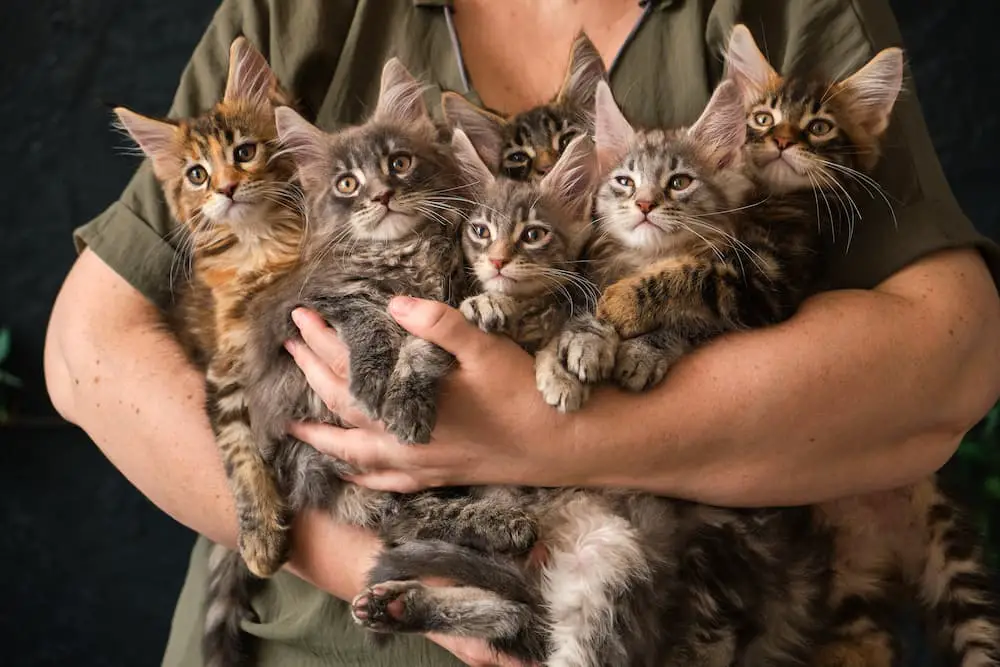 Dear Jennifer,
Dear Jennifer,
I had 5 cats – 3 boys and 2 girl – and all was peaceful. Sadly, my boy Stanley passed away around Christmas last year. He was the “top cat” and kept the rest of the cats in check with calm confidence. Since his passing, my cats have been fighting and one of the boys started spraying. He is neutered and has been for 4 years! I tried feliway without any measurable results, I read books on multiple-cat houses and added more cat trees and more litter boxes. I gave them time because I thought maybe they were mourning in their own way… Now I’m not sure what else I can do. Do you have any advice? -Jessica
Dear Jessica,
I am so sorry to hear about Stanley’s passing. Losing a member of our household can be painful not only to us but to our feline friends as well. You were right to give them time but now it is apparent that intervention is necessary.
Feliway can be very helpful but it needs to be used correctly. For instance, you would need at least 1 diffuser for every space the fighting is taking place and for large open rooms sometimes 2 or 3 diffusers are needed. Sometimes Holistic remedies can be helpful too. For a complete line made completely for cats try Spirit Essences formulated by a Holistic Veterinarian.
You were correct in getting multiple cat trees and litter boxes. Fighting cats need increased territory and giving them increased vertical space is necessary. Cat trees need to be strategically placed where the cats spend the most time. You may also want to consider adding some cat shelves as well. They are a great way not only to maximize vertical space without adding more trees but can be tied into the trees giving cats multiple escape routes. So while one is going up, another can leave via a shelf instead of having to pass the other cat.
The rule of thumb with litter boxes is one per cat plus one. Make sure boxes are uncovered and large enough for a cat to fit into comfortably. Under the bed totes make great litter boxes as they are usually larger and less expensive than the extra-large commercial boxes. Make sure boxes are also strategically placed. My guess is that the boy doing the spraying may be the one getting picked on the most. The other cats may not be giving him access to the boxes. They should be in wide open spaces where the cat can escape and not in closed quarters such as bathrooms, basements or back halls. Ideally, I would be placing boxes in the areas he sprays the most.
Wear out the aggressors. Give them something else to do than to pick on the others. Scheduled play time at least once a day will be necessary. Food puzzle toys can help provide additional mental stimulation that can take the edge off the inappropriate behavior.
You may also want to separate the boy that is doing the spraying into a safe room for now. Set him up in a spare room with litter box, food, water and places to perch. I would use a Feliway diffuser in this room. Does he stop spraying? If the answer is yes, then I would do a slow reintroduction back into the group. After 10 to 14 days of good behavior it will be time to give him time out of the room. Give him freedom for short periods of time when you are around to supervise. If all continues to go well increase his time out. If you have any setbacks then decrease his time out.
Meanwhile, I would click and treat everyone for all wanted and good behavior. Clicker training not only provides mental stimulation, but it is a great way to train your cats to understand appropriate behavior. Keep it positive as punishing for aggression will only increase aggression.
If the aggression continues then I would highly recommend contacting a Board Certified Veterinary Behaviorist or a Certified Applied Animal Behaviorist specializing in cat behavior. They can bring knowledge and skill to the table that a trainer can’t.
Thank you for the question!
Jennifer Mauger, CPDT-KSA
Jennifer is a Certified Professional Dog Trainer through the Certification Council for Professional Dog Trainers and owner of both L’Chaim Canine and L’Chaim Feline. Her interest in working with cats began after going into homes where, although she was working with the dog, Jennifer saw that the cat was also in need of behavior modification and mental enrichment. She wanted to be able to advocate for the cats from the point of view of a professional. For more training tips and tricks, follow her on Facebook by clicking here.
Do you have a training question for Jennifer? Ask her by clicking here.







